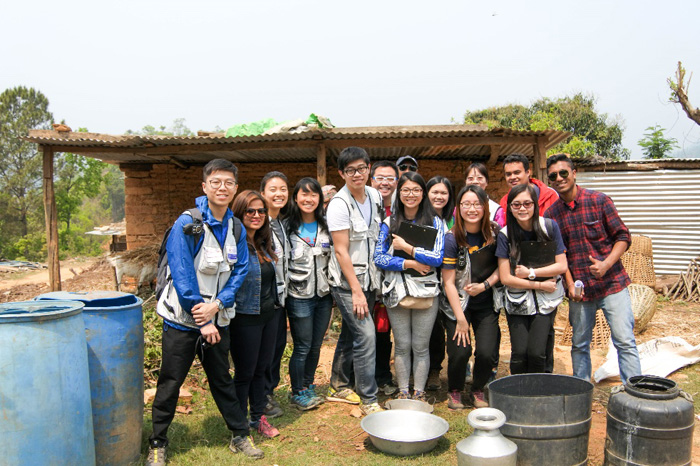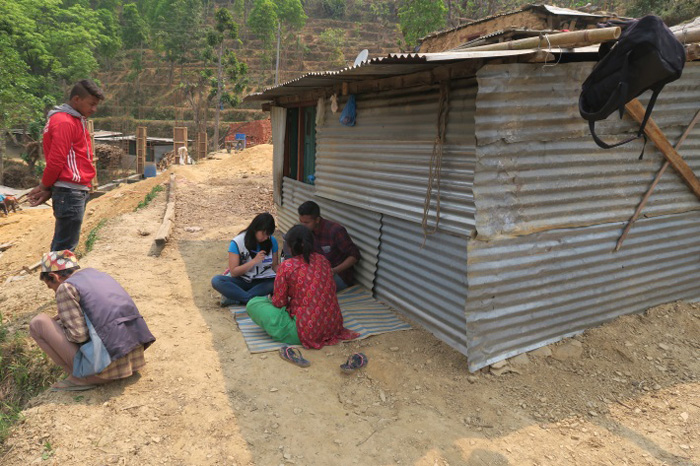CCOUC deployed a team of 10 trainees and trainers to Nepal to conduct field training programme on humanitarian and disaster preparedness on 11-17 April. During the trip, the team visited two villages severely affected by the dual earthquakes in 2015, as well as local and international NGOs to learn about their emergency relief and recovery efforts in the phase of post-disaster.
Sindupalchok, located in the north-east Nepal, was one of the most severely affected regions during the 2015 earthquake. The team visited two remote rural villages within Sindupalchok: Sanosirubari village in Chautara and Majhigaun village in Bahunepati, where we assessed the health status of the villagers using household survey. In addition, we conducted numerous focus group interviews on food security and menstrual hygiene management respectively. This allowed the trainees a better understanding of the far-reaching consequences brought about by the earthquake. The team identified shelter as the most pressing basic need that the villagers lacked even it has been two years after the earthquake; most villagers are still living in the makeshift temporary housing constructed from flimsy zinc metal sheets, often adjacent to the uncleared debris remnants of their old homes. Local healthcare workers in Bahunepati Health Centre run by Dhulikhel Hospital have continued to provide basic body checks and treatments to patients suffering from chronic illnesses/diarrhoea.
Besides, the team also visited Dhulikhel Hospital (also known as the Kathmandu University Hospital) to understand the local healthcare system; and National Society for Earthquake Technology (NSET) to learn about their efforts in building community resilience, namely through projects of retro-fitting school buildings and improving building code policies.
CCOUC hopes that this training trip could enable the trainees to learn about the collective relief and recovery efforts by various stakeholders; and identify measures to fill the gaps in building up community resilience.

